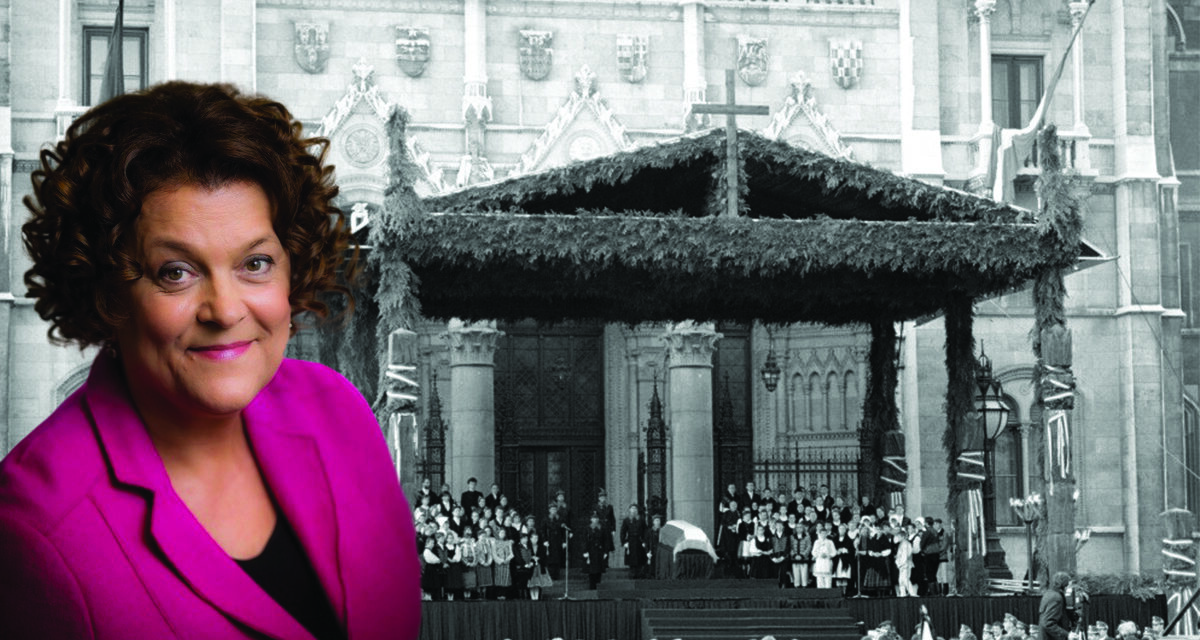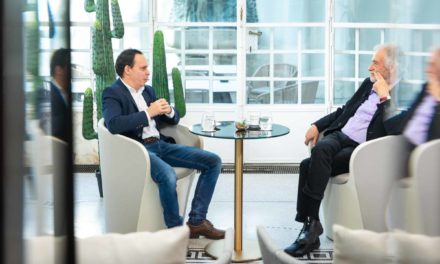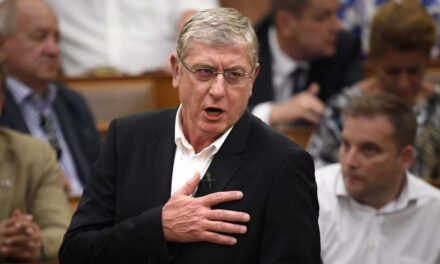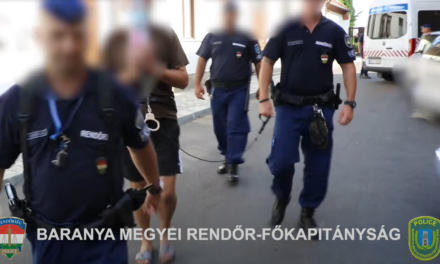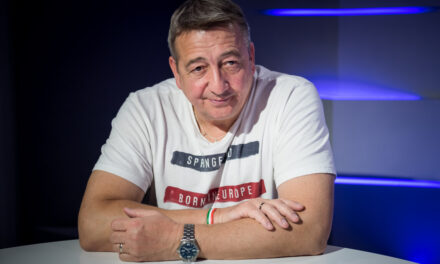To this day, many people live under the misconception that the event was built on the basis of the Kennedy funeral, but this is not true, writes Eszter Szabó, who was the press chief of Interior Minister Péter Boross at the time of the former prime minister's death, in his memoirs.
According to experts, the media is the first impression of history. Well, the printout related to the funeral of Prime Minister József Antall certainly contains incorrect facts. In commemoration of the 30th anniversary of the Prime Minister's death, I consider it worthwhile to describe the memories that only I know about.
In 1993, I worked as a press officer for the Minister of the Interior, Péter Boross. On one occasion, he asked me to make arrangements so that he could be the first to announce the death on public television. I indicated the minister's intention to the then deputy president of Hungarian Television, Balázs Várkonyi, and told him that he would receive the official notification from us.
On December 12, 1993, the minister called on the K-line that he was leaving immediately. I informed Vice President Várkonyi that we were going to Szabadság tér, where a prepared studio was waiting for us. After a small correction, Interior Minister Péter Boros announced to the public that the death had occurred.
As it turned out, it was a good thing that we were in a hurry, because on the way out we met the President of the Republic Árpád Göncz, next to whom his pressman, Mr. Faragó, was lounging with a winner's smile on his face. When he saw us, the satisfaction immediately disappeared from his features.
They understood that the Prime Minister did not want President Árpád Göncz to be the bearer of the news.
From the studio, we immediately went to the Parliament, where an extraordinary government meeting was called. I did not know that the MDF official called the party's supporters to the building. Of course, I did not participate in the government meeting, that was the responsibility of the government spokesperson Judit Juhász. However, guided by my sixth sense, I looked into the room. There, they were pressing to replace the Prime Minister with Péter Boross, who was the Deputy Prime Minister, but of course his appointment could not take place yet. It also seemed questionable, would it happen?
Judit Juhász brought a black candle, for which I asked the black bow from one of the serving ladies, who had been wearing it in her hair until then. This is how we created the "memorial chair".
In the midst of the usual confusion, no one found the key to the upstairs terraces, similarly to the taxi blockade. A depressing memory, as my previous minister, Balázs Horváth, had to "float" on the upper ledge for this reason. Many claimed he must have been drunk.
I declare with responsibility that I never saw him in an alcoholic state while working with him during his tenure.
When the government meeting was over, the minister came out to the parliament and tried to address the audience at full volume without using the sound system, then went into the crowd, which had grown to a few thousand people, and shook hands with the people. By the time he got back to the main staircase, the then Chief of Police Sándor Pintér had already picked up a loudspeaker and announced that the minister could now speak clearly. I advised him to take the opportunity. Although he listened, he nevertheless headed south and remarked, "I promised an interview to the radio." Now you have to speak to the crowd first, I said in a slightly raised voice, but he just walked on. Then I boldly grabbed the lapel of his dark jacket. He glared at me before he brushed past me to shake me off and leave me. But I needn't have worried because the tone of my words and the determined look in my eyes made me realize that this young girl was right.
It is correct if you speak to those present first, and then the radio interview can follow.
As press chief, I realized on October 23, 1990 that something was missing from the new government structure. Figures in black uniforms marched onto Kossuth Square. I asked the policemen securing the space, what is this "black army"? They explained that "since the regime change, the space belongs to them". In February 1991, I asked Mr. Boross if he knew whose task it was to organize the upcoming national holiday, March 15. After a little thought, he said with a regretful face that he had no idea.
The result of my investigation is that this KISZ was given up in the framework of the so-called "Revolutionary Youth Days", but the organization ceased to exist, and the national holidays became derelict.
I pointed out the unsustainability of the situation, and the government assembled an organizing committee of deputy state secretaries. Although I was not included in the committee as head of department, I was the only one with a capable team, so we organized the celebration in three weeks at the head of an operational committee. I reported this matter only to the Prime Minister's Deputy Chief of Staff István Forrai, the minister only wanted to see a one-page project description, which he signed, and warned me not to spend too much.
When it was revealed that "Jézus Mária, the prime minister must be buried", I was not invited to the first meeting, but I already attended the second meeting on the instructions of István Forrai. I'll never forget
The aggressiveness of Imre Makovetz, who shouted at the chief of police not to talk about security issues here when "we are burying a prince".
Of course, in reality, no one knew what the order was for the Prime Minister's funeral.
The librarian of the Ministry of the Interior reviewed the sources and retrieved the funeral documents of the young Miklós Horthy. That's when we decided that we would copy it, but not name the source of the "best practice". We wanted to avoid another political debate.
To this day, many people live under the misconception that the event was based on the Kennedy funeral.
The day before the funeral, the coffin was set up in the dome hall of the Parliament. I added three details. First of all, I asked Father László Németh, the secretary of the cardinal, to bring the Mátyás calvary from the Esztergom treasury, as this work of art was the president's personal favorite. The other was the matter of the candles. After studying various sources, Father Németh considered six candles to be appropriate. He entrusted the six special candlesticks and the candles to the sacristy of the Basilica. However, something went wrong, the candles were not lit at the time of Cardinal Paskai's condolence.
Following my idea, the memorial card was created, which was given to all the condolencers, on it, in consultation with the family, Dr. Text from József Antall:
“I serve and I will serve as long as the nation benefits from it. I will do it while I can”.
At my suggestion, sixty thousand memorial cards were made. Only a few pieces survived and were put into different collections.
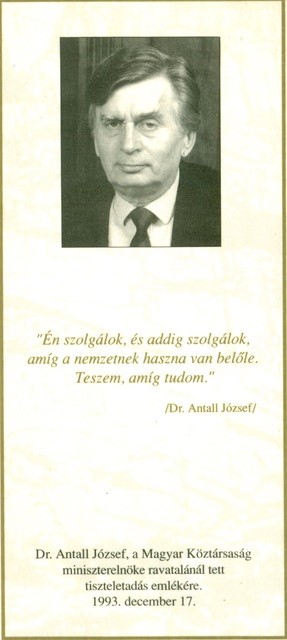
Source: Eszter Szabó
Mourners waited in snaking lines in the cold weather, sometimes for four hours. The police reported that people were grumbling, something had to be done. I immediately asked the Hungarian Maltese Charity Service and the Red Cross to bring hot tea as soon as possible. I also thought it was important to treat those who were waiting as spiritual food. Press chief Judit Juhász climbed a wooden tower and, giving the best performance of her life, sang and read aloud from domestic and international messages. Her words brought tears to her eyes.
On the morning of the funeral, December 17, 1993, I walked around the dome of the Parliament and was shocked to find that the lilies of Mrs. Klára Antall's wreath had completely faded during the night. I contacted the head of protocol, who was eating bacon and onions with great appetite in his office. He did not notice the condition of the flowers. At my request, he quickly replaced the flowers in the wreath.
The short program before the funeral was a great success. The torches fluttered like at the funeral of a prince.
The suit of the performing actor, Antal Cserna, was damaged, as the flames got into his jacket. The production of the folk dancers from Transylvania was memorable, they were both technically perfect and solemn with dignity. According to the press, they were professional dancers. Their dance was truly professional, even though "only" traditional civilians performed.
A huge crowd gathered in front of the Parliament, including many diplomats. They blocked the path of the horse-drawn cannon that entered the south side of the square. The police captain asked what to do? I asked them to push the diplomats back with polite determination, who were visibly shocked, but nevertheless gave way.
Even today, the sound of the eight drums rings in my ears as their drummers rhythmically played their instruments. They created a truly dignified, throat-straining festive atmosphere. A week earlier, a representative of the Ministry of War said it was impossible to raise eight drummers. Somehow it worked!
The walk to the Fiumei cemetery took a long time. It could no longer be held today, because the beginning of Alkotmány utca and Kossuth square were also closed. But then everyone started across the city towards the final resting place of the deceased prime minister. When the cannon base pulled up to the grave, the horses suddenly bolted. We were afraid the coffin would fall. There were exciting moments, but we avoided shame.
Unfortunately, we buried a large-scale European politician very early. Durum, durum, durum - the drums kept saying in our heads for hours. We mourned.
Featured image: Eszter Szabó, in the background the funeral of Prime Minister József Antall / Civilek.info graphic

